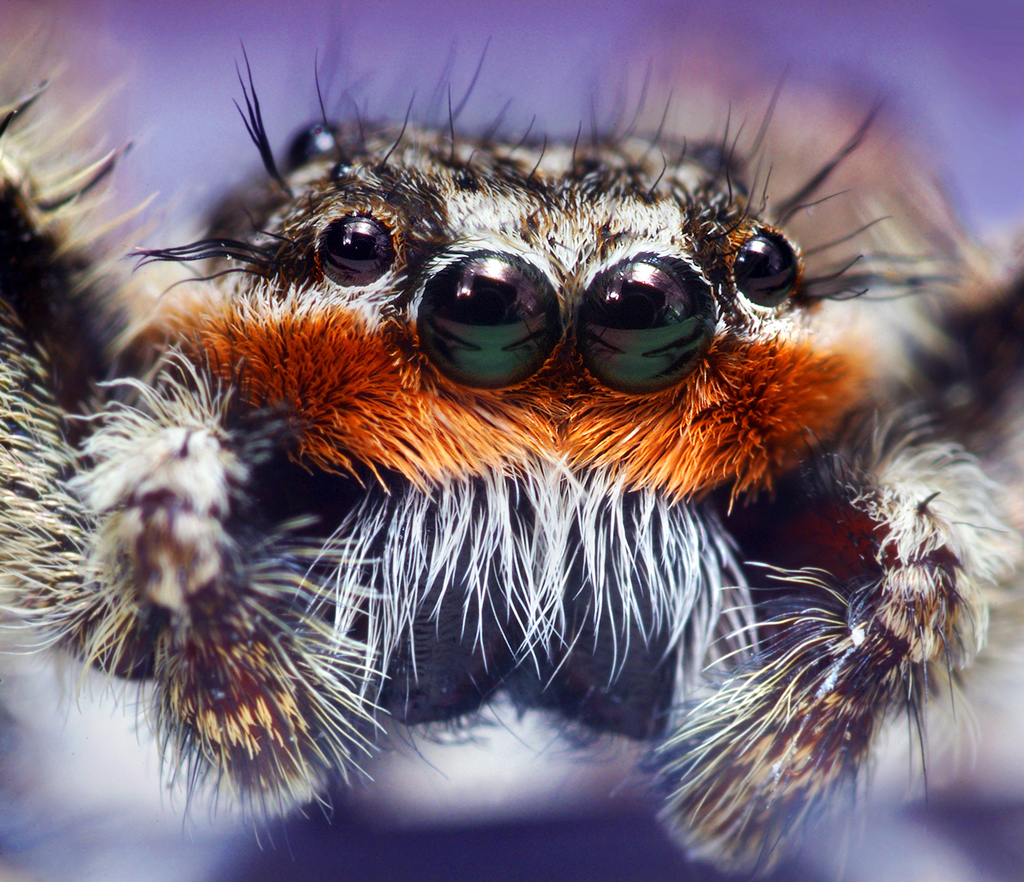Metacyrba Undata on:
[Wikipedia]
[Google]
[Amazon]
''Platycryptus undatus'', also called the tan or familiar jumping spider, is a
by Cole, Noah. Ontario Nature Magazine. 2017. pp. 60-61
 Eggs are laid and hatch during the summer, and adults and other stages overwinter in their individual silken shelters. Although the shelters are built separately and keep the spiders out of direct contact with each other, Kaston reports that as many as fifty of them may crowd their shelters for hibernation together so tightly that they form a continuous blanket under the loose bark of a standing tree.
Eggs are laid and hatch during the summer, and adults and other stages overwinter in their individual silken shelters. Although the shelters are built separately and keep the spiders out of direct contact with each other, Kaston reports that as many as fifty of them may crowd their shelters for hibernation together so tightly that they form a continuous blanket under the loose bark of a standing tree.
 ''Platycryptus undatus'' occurs in
''Platycryptus undatus'' occurs in
The world spider catalog
version 8.5. ''American Museum of Natural History''.
Picture of ''P. undatus''
(free for noncommercial use) * Good information on spiders' lifestyles from th
* Lucian K. Ross: ''A jumping spider feeding on an earthworm.'' Peckhamia, 71, 1, S. 1-2, September 200
PDF
{{Taxonbar, from=Q291947 Salticidae Spiders of North America Spiders of Central America Spiders described in 1778
species
In biology, a species is the basic unit of Taxonomy (biology), classification and a taxonomic rank of an organism, as well as a unit of biodiversity. A species is often defined as the largest group of organisms in which any two individuals of ...
of jumping spider
Jumping spiders are a group of spiders that constitute the family Salticidae. As of 2019, this family contained over 600 described genera and over 6,000 described species, making it the largest family of spiders at 13% of all species. Jumping spi ...
.A guide to some of Ontario's spidersby Cole, Noah. Ontario Nature Magazine. 2017. pp. 60-61
Description
The bodies of these spiders are rather compressed in the vertical direction, which allows them to hide themselves under the loosened bark of trees and in other tight places. They have a prominent chevron-like pattern on their abdomens which may make them more difficult to distinguish on mottled surfaces. Females of this species are between 10 and 13 mm in body length, and males range from 8.5 to 9.5 mm. It favors vertical surfaces such as fences, walls, etc. and because of its habits it is easily seen. These spiders are not inclined to bite, but even though they are rather small they can deliver a defensive bite if they are pinched or squeezed. Eggs are laid and hatch during the summer, and adults and other stages overwinter in their individual silken shelters. Although the shelters are built separately and keep the spiders out of direct contact with each other, Kaston reports that as many as fifty of them may crowd their shelters for hibernation together so tightly that they form a continuous blanket under the loose bark of a standing tree.
Eggs are laid and hatch during the summer, and adults and other stages overwinter in their individual silken shelters. Although the shelters are built separately and keep the spiders out of direct contact with each other, Kaston reports that as many as fifty of them may crowd their shelters for hibernation together so tightly that they form a continuous blanket under the loose bark of a standing tree.
Distribution
 ''Platycryptus undatus'' occurs in
''Platycryptus undatus'' occurs in North
North is one of the four compass points or cardinal directions. It is the opposite of south and is perpendicular to east and west. ''North'' is a noun, adjective, or adverb indicating direction or geography.
Etymology
The word ''no ...
and Central America
Central America ( es, América Central or ) is a subregion of the Americas. Its boundaries are defined as bordering the United States to the north, Colombia to the south, the Caribbean Sea to the east, and the Pacific Ocean to the west. ...
. The distribution of this species ranges from the Eastern States and adjacent Canada
Canada is a country in North America. Its ten provinces and three territories extend from the Atlantic Ocean to the Pacific Ocean and northward into the Arctic Ocean, covering over , making it the world's second-largest country by tota ...
, to Texas
Texas (, ; Spanish language, Spanish: ''Texas'', ''Tejas'') is a state in the South Central United States, South Central region of the United States. At 268,596 square miles (695,662 km2), and with more than 29.1 million residents in 2 ...
and Wisconsin
Wisconsin () is a state in the upper Midwestern United States. Wisconsin is the 25th-largest state by total area and the 20th-most populous. It is bordered by Minnesota to the west, Iowa to the southwest, Illinois to the south, Lake M ...
.
References
* (2008)The world spider catalog
version 8.5. ''American Museum of Natural History''.
External links
Picture of ''P. undatus''
(free for noncommercial use) * Good information on spiders' lifestyles from th
* Lucian K. Ross: ''A jumping spider feeding on an earthworm.'' Peckhamia, 71, 1, S. 1-2, September 200
{{Taxonbar, from=Q291947 Salticidae Spiders of North America Spiders of Central America Spiders described in 1778